Bharti Kher – A Consummate Joy
21 July, 2020 – 3 January, 2021
A solo exhibition by acclaimed British-Indian artist Bharti Kher (b. 1969 London). Kher’s art gives form to daily life and its rituals in a way that reassesses and transforms its meaning to yield an air of magical realism.
A Consummate Joy comprised of new and recent works, ranging from sculpture, painting, installation, and watercolours, and the latest annual edition of a 30-year project which began in 2010, Virus XI (2020). Now living in New Delhi, India, Kher’s use of found objects is informed by her own position as an artist located between geographic and social surroundings. Kher’s way of working is exploratory; surveying, looking, collecting, and transforming, as she repositions the viewer’s relationship with the object and initiates a dialogue between metaphysical and material pursuits.

Installation view photos of Bharti Kher, A Consummate Joy 21 July 2019 – 03 January 2020. IMMA, Dublin. Photos by Ros Kavanagh
Paula Rego – Obedience and Defiance
18 September, 2020 – 4 May, 2021
This was a major retrospective by one of the most influential figurative artists of our time, Paula Rego. Spanning Rego’s entire career from the 1960s and comprising more than 80 works, the exhibition included paintings never seen before and works on paper from the artist’s family and close friends.
The selection of works focused on the moral challenges to humanity, particularly in the face of violence, gender discrimination, and political tyranny. There are paintings and etchings related to children sold into slavery in North Africa (1996–98), abortion (1998–2000), and female genital mutilation (from 2009). Many of the images begin with the artist’s Portuguese roots and childhood experiences or respond to current affairs.
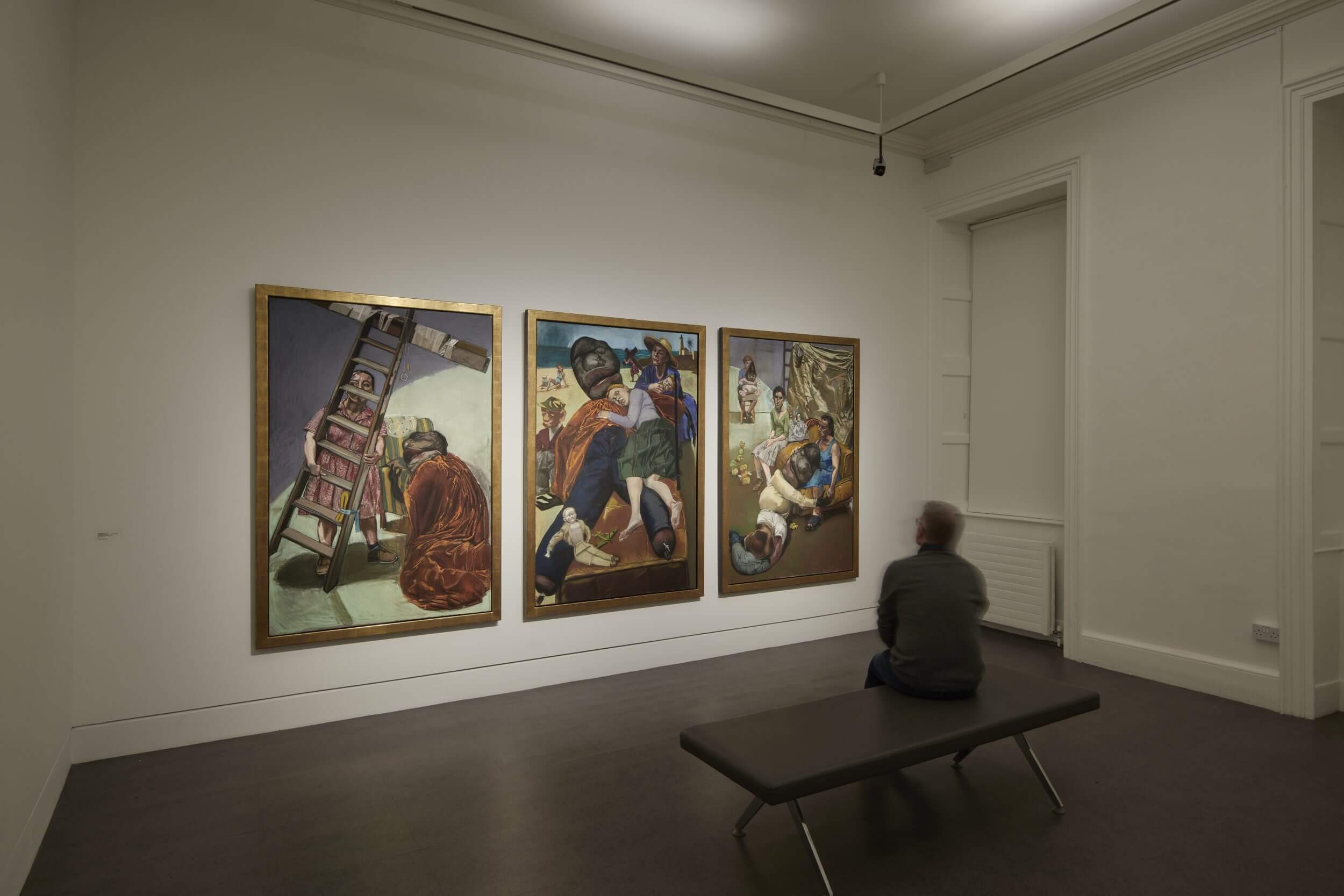
Installation view Paula Rego, Obedience and Defiance, IMMA, Dublin. Photo Ros Kavanagh.
Northern Light: The David Kronn Photography Collection
28 October, 2020 – 3 October, 2021
Northern Light was the third exhibition at IMMA drawn from the exceptional collection of modern and contemporary photography put together by Dr David Kronn over the past 25 years. The David Kronn Collection is a promised gift to IMMA and comprises more than 1100 photographs ranging in content from 19th-century Daguerreotypes to works by award-winning contemporary photographers.
Northern Light presented work by photographers that examines the history of the conflict in Northern Ireland specifically and places it alongside other contemporaneous events internationally. As the U.K. prepared to leave the European Union in 2021, it was an opportune time to reflect on the shared history of Ireland and the U.K., the centenary of the partition of this island, and the civil war that ensued. In the hands of such accomplished artists, concepts of borders (real or imagined) and the consequences of demarcating territory were engaged with incredible sensitivity and imagination.
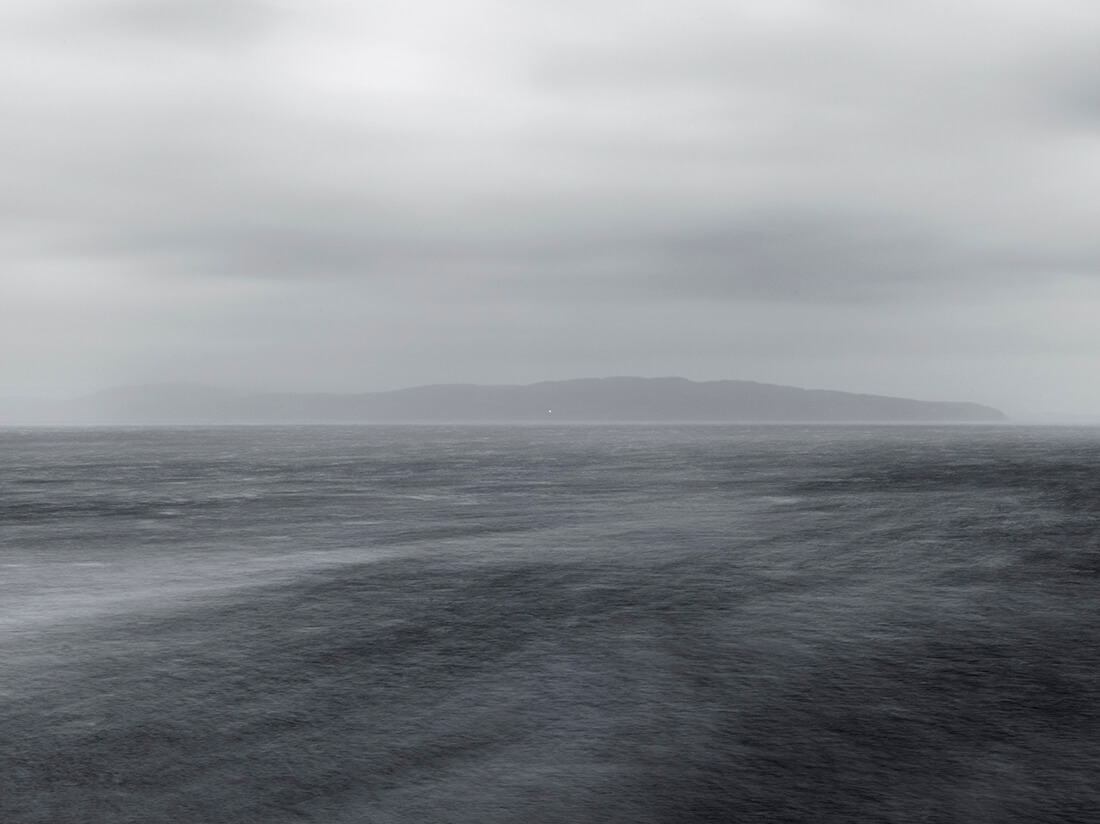
Donovan Wylie, Lighthouse, 12 March 2019. Torr Head, Ireland, Looking towards Mull of Kintyre, Scotland, Image courtesy IMMA
Visual Voices & Bok Gwai
15 December, 2020 – 2 August, 2021
The exhibition comprises of works from The Dublin City University (DCU) MELLIE Programme’s Visual Voices which are presented alongside the IMMA Collection work Bok Gwai / White Ghost (2005) by artist Anthony Key. Through contrasting processes, both projects probe themes of hospitality, identity and displacement to address connected experiences. Visual Voices is a collaborative storytelling project promoting equality, intercultural dialogue and social inclusion, facilitated by PhD candidate, Julie Daniel. It adopts a photovoice methodology of sharing stories, recorded through image and text, to reflect the perspectives of everyone involved, DCU and Direct Provision participants alike. While Anthony Key’s installation work Bok Gwai / White Ghost made from the familiar iconic takeaway foil carton and repurposed as a tile to construct a kitchen, addresses themes of displacement, stereotypes, nostalgia and the power of food to psychologically transport someone to a place more familiar than where they are, this work implies many humble yet powerful associations with culture and identity.
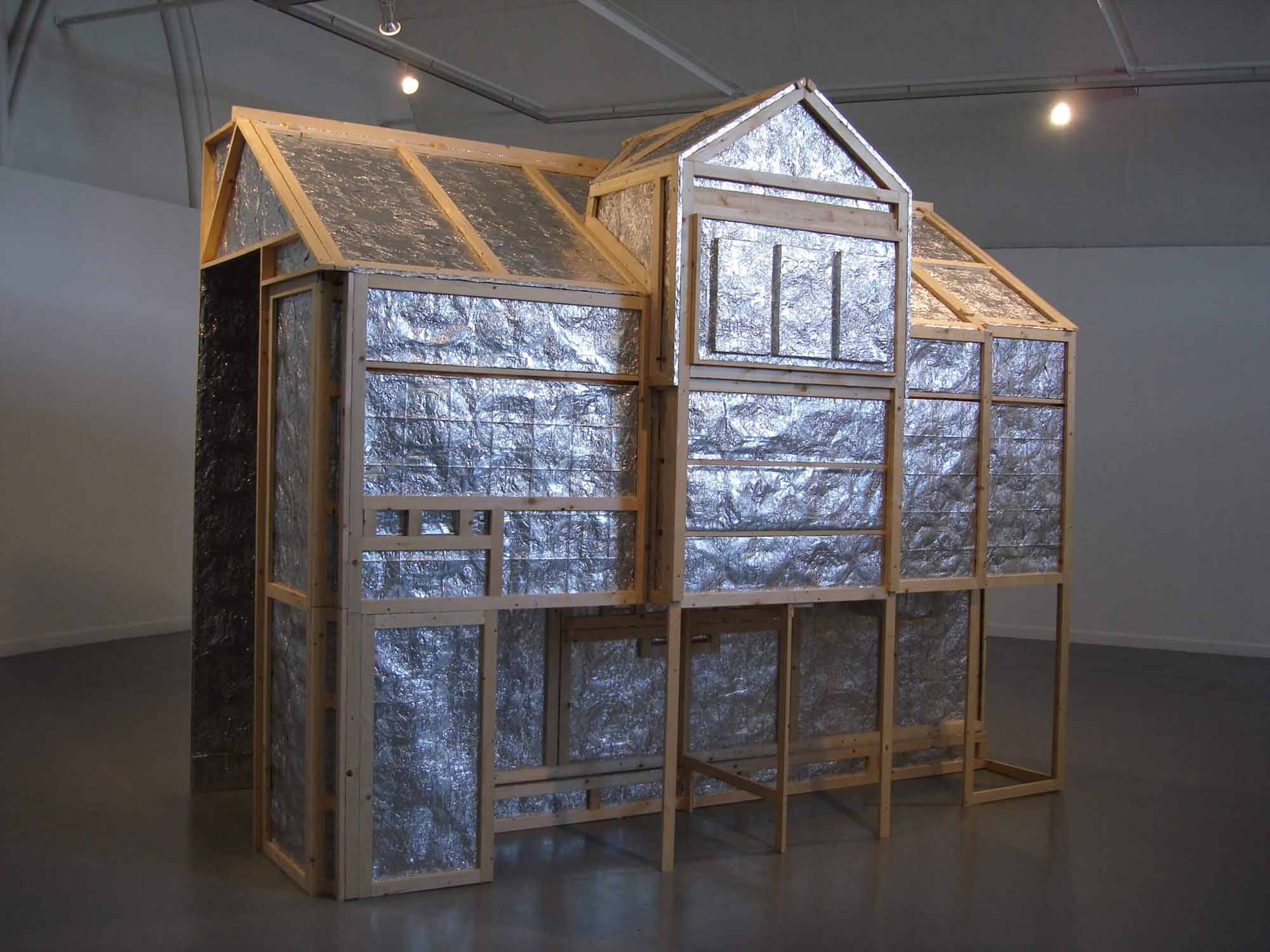
Anthony Key, Bok Gwai / White Ghost, 2005. Tin foil takeaway cartons, mixed media. 335.2 x 152.4 x 274.3 cm. IMMA Collection: Purchase, 2006
Freud Project 2016–2021
29 September, 2022
2021 was the final year of the long-term loan and display of works by world renowned artist Lucian Freud to IMMA Collection by private lenders. As well provoking a new reflection on Freud’s work and its meaning in a contemporary world, the effect of long-term display and ‘slow looking’ has enabled new and existing audiences to experience and really engage with Freud’s paintings and other works on display in IMMA.
Freud is widely recognised as one of the greatest realist painters of the 20th century, renowned for his intimate, honest, often visceral portrayal of the human form. He changed the way we see portraiture and the nude in art. The works in this exhibition, mainly dating from 1970 onwards, explore several of the artist’s key themes such as portraiture, self-portraiture, still-life, animals, and nature. They include portraits of his family, other artists, an art writer, his art dealer, businesspeople, and his doctor. The loans also reflect his friendships and contacts within the racing world, his love of horses and dogs, his interest in the physical and psychological relationships between human and animal sitters, and his studio and garden.
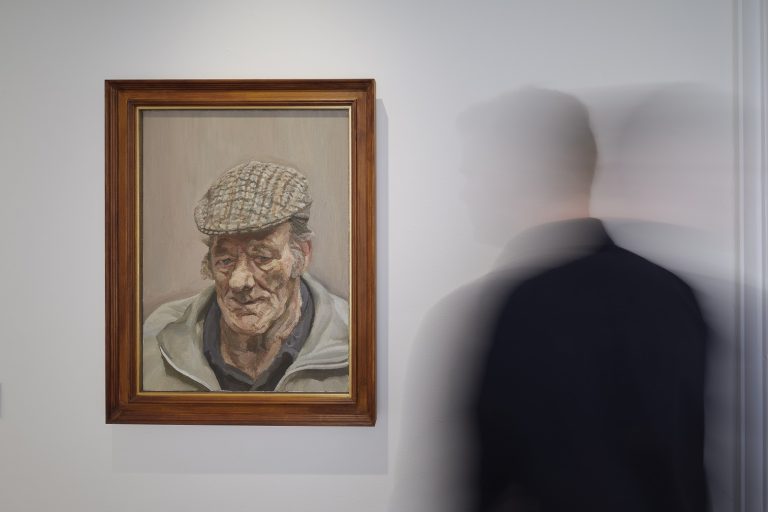
Installation View of IMMA Collection: Freud Project, Gaze, IMMA, Dublin, 2018. Photo: Ros Kavanagh
Freud Project: The Artist’s Mother
3 March, 2021 – 1 August, 2021
The Artist’s Mother was the last project in a series of responses as part of the IMMA Collection: Freud Project 2016-2021. Inspired by Lucian Freud’s paintings of his mother, Lucie, this is the first presentation which interweaves digital and physical elements. Central to the project is the work of artist Chantal Joffe who has portrayed her mother, Daryll, in an exceptional series of paintings and pastels.
The exhibition The Artist’s Mother: Lucie and Daryll was the first time IMMA combined both a gallery display in the Freud Centre, alongside a digitally installed exhibition in a new, virtual gallery space. In this series of 15 portraits, 6 in dialogue with Lucian Freud in the gallery and 13 in the virtual gallery space, with some of the portraits been shown in both spaces, Chantal Joffe provided insights into the unique bond between mother-subject and artist-child.
At the centre of this conversation were two of Freud’s most outstanding portraits of his mother, The Painter’s Mother Reading (1975) and Painter’s Mother Resting I (1976). The encounter was further explored online through conversations and contributions by poet Annie Freud, Lucian’s eldest daughter.
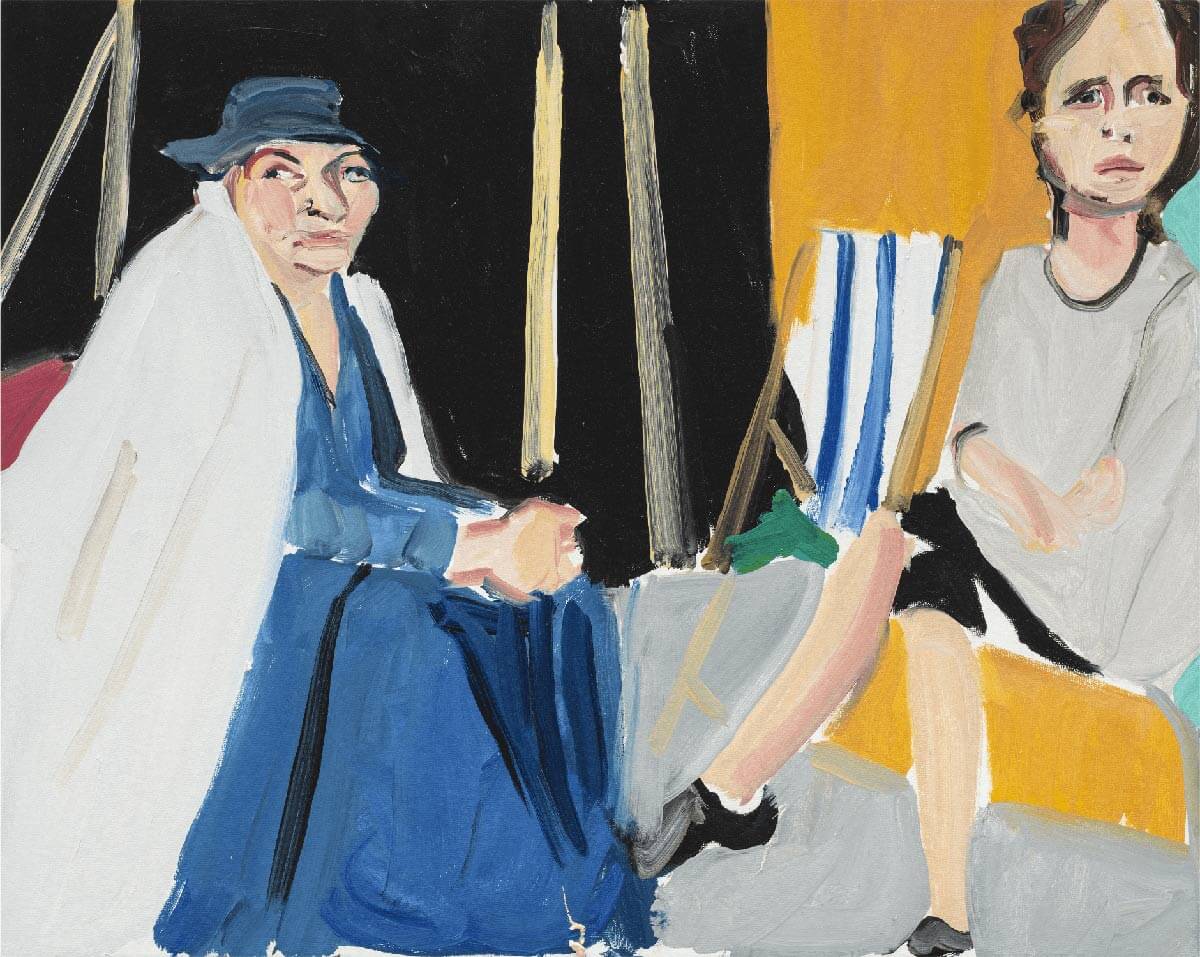
Chantal Joffe, Beach Hut, 2018 Oil on board 51 x 41 cm, © Courtesy the artist and Victoria Miro.
Freud Project: Soul Outsider
30 June, 2021 – 1 August, 2021
Soul Outsider, was a new piece of music composed by renowned London-based, Northern Irish composer Deirdre Gribbin and performed by Crash Ensemble which was presented to mark the conclusion of The Freud Project.
Entitled Soul Outsider, Gribbin has focused on Lucian Freud’s female portraits reflecting on relationships between sitter and artist and the inner self laid bare. Her interpretation was spun through an interwoven narrative: ‘Night Painting’, ‘Human Animal’, and ‘Under Eyes’ featuring Crash Ensemble, Ireland’s most respected and internationally recognised new music ensemble. This work was made possible with the support of the Arts Council Commission Fund.
Ghosts from the Recent Past
18 September, 2020 – 5 September, 2021
Framed by key political events of the past 40 years, both in Ireland and further afield, the exhibition presented artworks from the IMMA Collection from the 1980s onwards, exploring how urgencies of the recent past continue to inhabit the present. These works tell stories of colonisation and contested borders, of human relationships to the environment, of radical self-representation in the face of oppression and of love. The exhibition looked at how artworks carry the language of resistances, waywardness, joys and subversions, which continue to resonate and agitate. Given the Irish context and this moment of global reckoning, the impact of contradiction, duality and paradox abounds. The placement of artworks in the galleries played with these tensions, highlighting that opposing forces are not always easily disentangled: love from hate, fear from hope, protection from invasion. These forces are akin to lingering atmospheres or “ghosts” from the past which play an active role in structuring the conditions of the present.
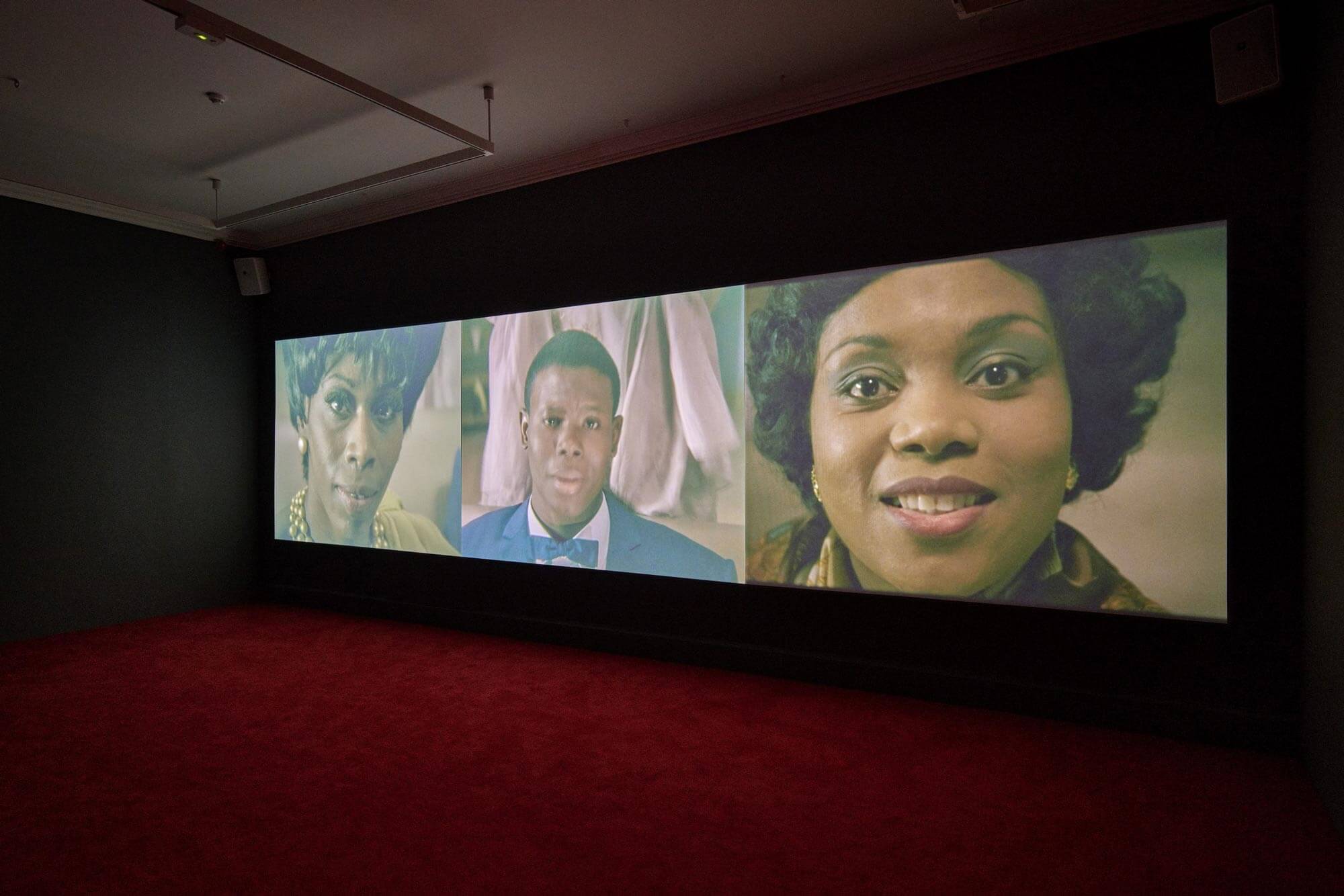
Installation view Ghosts from the Recent Past, 1 Sept 2020 – 28 Feb 2021, IMMA, Dublin. Photo Ros Kavanagh.
IMMA 30 Setting Out
25 May, 2021 – 5 September, 2021
IMMA’s 30th birthday provided a special moment to look at the huge achievements and ambitions set out in 1991, but also to imagine how this national institution can continue to experiment, connect, and transform into the future.
IMMA’s history was explored in a vibrant wall graphic by Niall Sweeney that maps the museums recent history, reminding us of the great shifts in society over the last 30 years. These events were set against a selection of equally notable transformations in the international art landscape as artists and institutions globalised and mobilised artistic production and expanded their audiences in the 21st Century.
Also on view were two significant, yet intimate presentations drawn from the IMMA Collection that tell our story; the restaging of the pivotal installation of Richard Long and Paul Henry, shown as part of IMMA’s inaugural exhibition Inheritance and Transformation in 1991, and two new works by Anne Tallentire, These Aggregations (2010) and Setting Out 2 (2020), recently acquired by the museum which reflect the IMMA Collection today.
Richard Long’s work Kilkenny Limestone (1991), is shown alongside Paul Henry’s Lake and Blue Mountains of Connemara, signifying the growth and richness of the Museum’s Collection, as the original work shown in 1991, Turf Stack in the Bog (1927), was from the University of Limerick’s Collection.
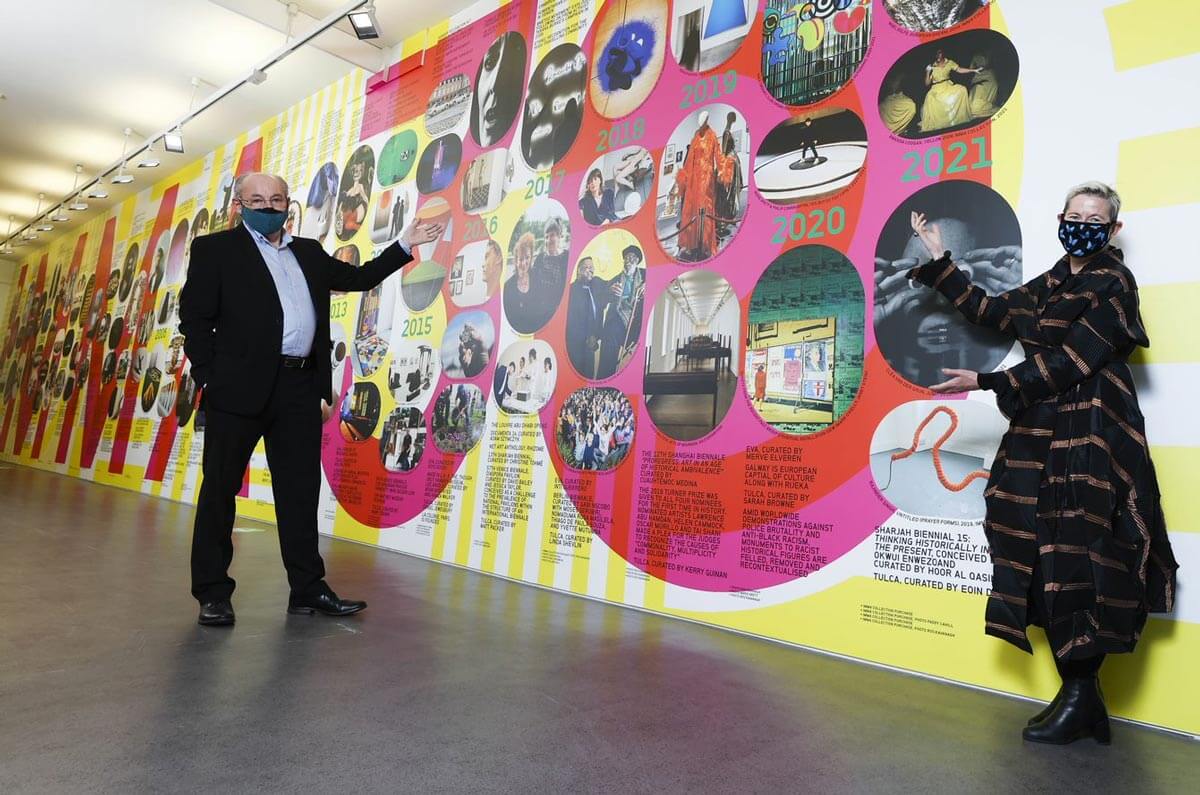
The Narrow Gate of the Here-and-Now
23 August, 2022
This was a museum-wide exhibition showcasing the IMMA Collection and the history of the Museum since 1991. The Narrow Gate of the Here-and-Now, IMMA: 30 Years of the Global Contemporary was presented in four chapters, each one exploring the past three decades through different thematic approaches: Chapter One: Queer Embodiment; Chapter Two: The Anthropocene; Chapter Three: Social Fabric and; Chapter Four: Protest and Conflict. This was the first time in IMMA’s history that the entire Museum was given over to a display from the IMMA Collection and presented more than 200 artworks. The exhibition also showcased a selection of recently acquired artworks to the Collection through a fund from the Department of Tourism, Culture, Arts, Gaeltacht, Sport and Media. Alongside this, several key loans augmented the artworks in the Collection and Archive.
The exhibition positioned IMMA’s inception in 1991 as part of a crucial moment in the history of globalisation, within the European context. Around this time, several museums of contemporary art in countries such as Poland and Lithuania were redefining their cultural identities in the context of a post-Communist Europe. These, and wider shifts towards globalisation, with the dawn of the internet and rise of neoliberal politics in the West, provided the context for thinking about IMMA’s role in relation to the global contemporary.
The exhibition is designed by the collaborative studio, Culturstruction, led by Jo-Anne Butler and Tara Kennedy.
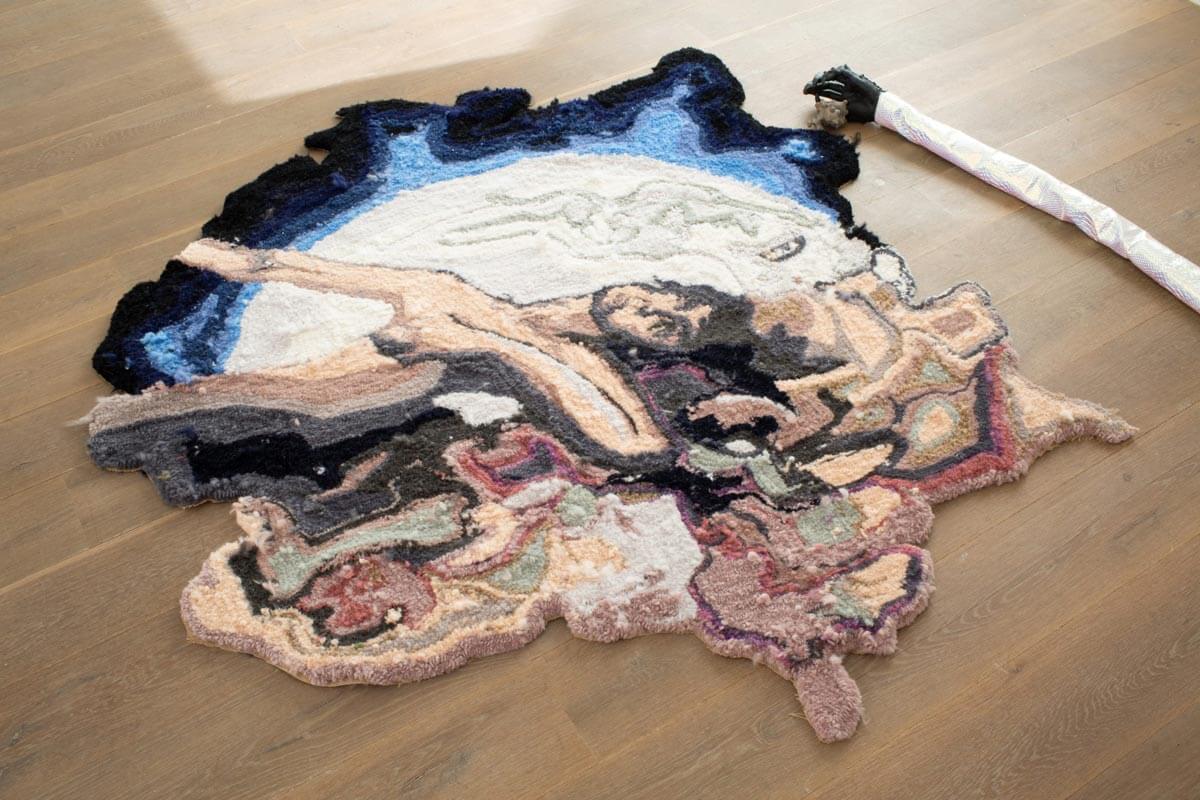
Bassam Al-Sabah, Still, In The Darkness, 2019, Hand tufted rug, 100% Wool on hessian backing, approx. 170 x 150 cm, Collection Irish Museum of Modern Art, Purchase, 2021, 2021
Chapter one: Queer Embodiment
30 July, 2021 – 1 May, 2022
Queer Embodiment, mapped the context for the project, reflecting on the dramatic legislative changes that occurred in Irish society, such as the decriminalisation of homosexuality (1993), provision of divorce (1996), marriage equality (2015), and the repeal of the Eighth Amendment (2018). These moments in the struggle for human rights find echoes across the globe, as grassroots movements continue to contest the impact of the State on the Body.
The Museum’s Collection and Archive reflects a strong history of feminist practice, relaying the defiance of women in Ireland against church and state oppression and queer histories that capture moments of resistance and joy, as well as presenting the devastating effects of HIV/AIDS. While many of these changes have built a more compassionate society, some of the works in the exhibition highlighted troubling issues, such as Irish citizenship and migration, which remain unresolved.
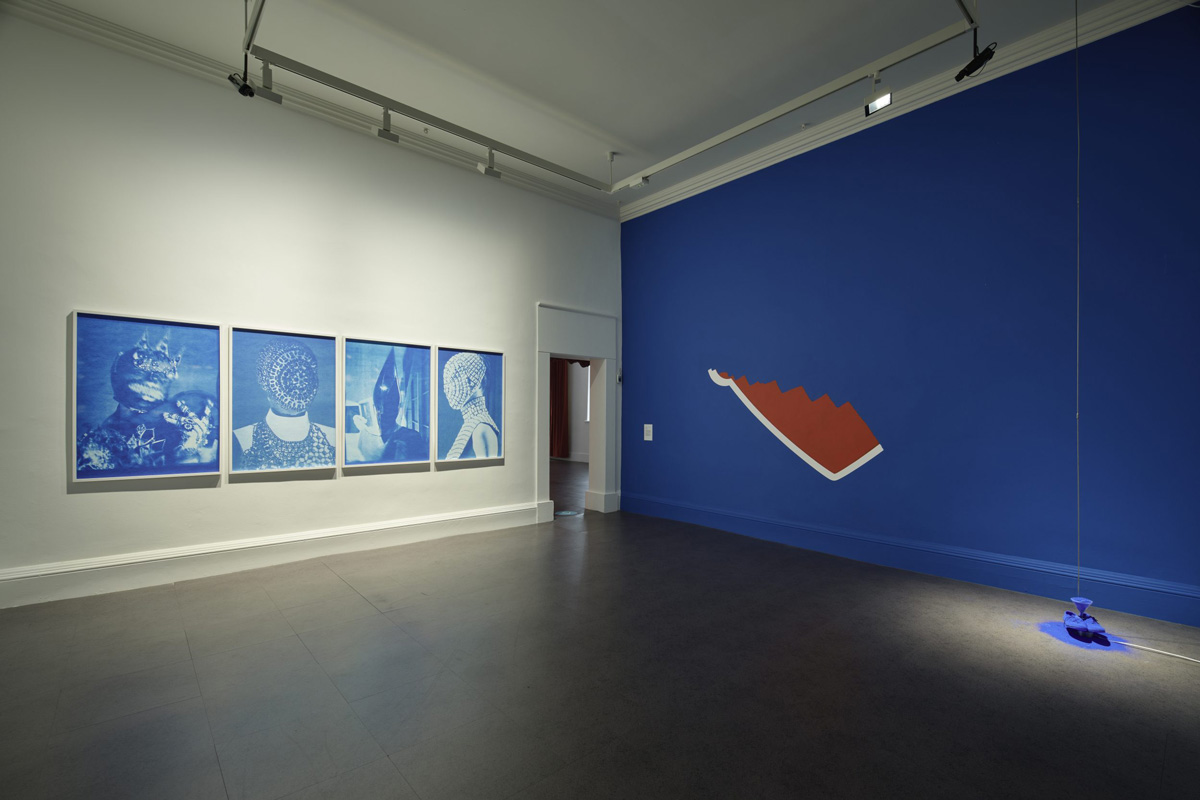
Installation view Narrow Gate of the Here-and-Now: Queer Embodiment, IMMA, Dublin. Photo Ros Kavanagh.
Chapter two: The Anthropocene
24 September, 2021 – 4 September, 2022
The Anthropocene focused on the present geological era in which human activity has become visible as a dominant and destructive influence on the Earth’s systems. Expanding on the media’s focus on rising sea levels, heat waves, and species extinction, it pointed to the multiple temporalities of the Anthropocene. While on the one hand focused on the rapid acceleration of our lives in the last three decades, chapter two also explored deep histories and speculative futures at a moment of reckoning with climate change.
The exhibition began by looking at the colonial origins of the Museum and how its legacies continue to shape understandings of the world around us – from the classification of mineral, plant, and animal life to the upholding of differences between humans. Facsimile prints of Albrecht Dürer’s meticulous botanical paintings from the 16th century were shown alongside recent works by Breda Lynch and Nevan Lahart, exposing different lifetimes within the Museum’s Collection.
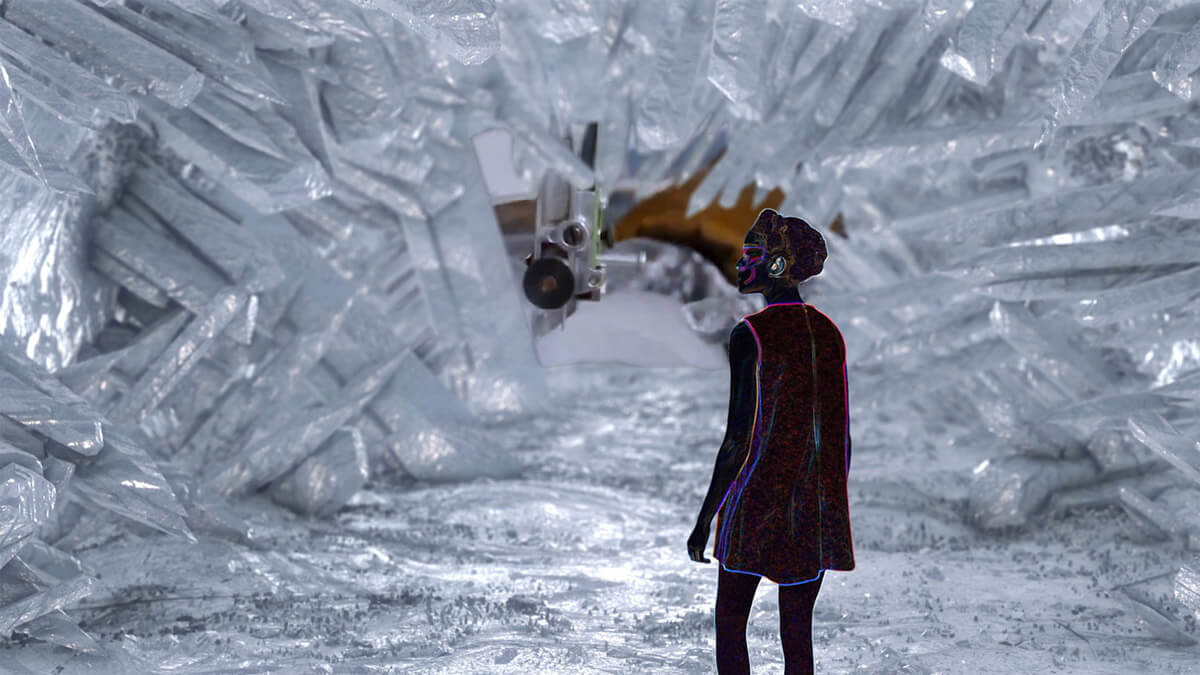
The Otolith Group, INFINITY Minus Infinity, 2019, Video, 56 min. 51 sec., Collection Irish Museum of Modern Art, Purchase, 2020
Chapter three: Social Fabric
19 November, 2021 – 6 November, 2022
Social Fabric positioned textile and its histories at the heart of the exploration of the here-and-now. This chapter considered themes of globalisation, technology, labour, community, and agency through artworks that engage with textile as commodity, material, and craft. These ideas formed pathways across the exhibition, from feminist work to heirlooms, woven acts of resistance to the relationship between weaving technologies and computer code.
It considered textile as a commodity, associated with global industry and exchange, and addresses the association of textile production with ‘women’s work’, domestic industry, and labour. It explored the opportunity provided by textile making and materiality for personal expression and agency. Proposing that ‘Textile’ not only empowers through its frequently subverted association with the ‘tender crafts’, but also as a symbol of care, repair, heirloom of knowledge, and self-sufficiency. The interconnected relationship of textile production and the development of computers and contemporary digital technologies was also explored.
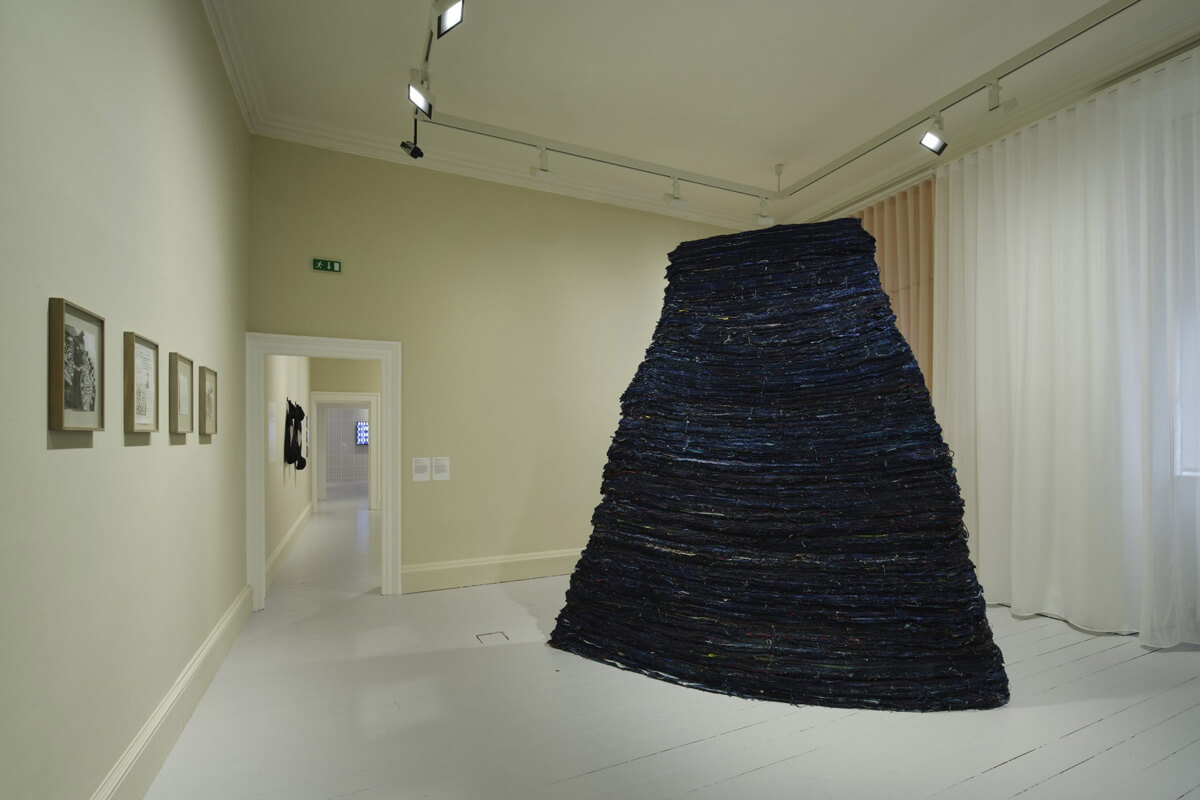
Installation view Narrow Gate of the Here-and-Now: Social Fabric, IMMA, Dublin. Photo Ros Kavanagh.
Chapter four: Protest and Conflict
19 November, 2021 – 1 January, 2023
Protest and Conflict took the IMMA Collection as a starting point to explore how artists have worked to subvert power and use art as a conduit for civil disobedience. With a focus on their contributions to movements and events in recent years including Black Lives Matter and The Artists’ Campaign to Repeal the Eighth Amendment, this exhibition celebrated the contributions artists have made to protest as an act of resistance and assertion.
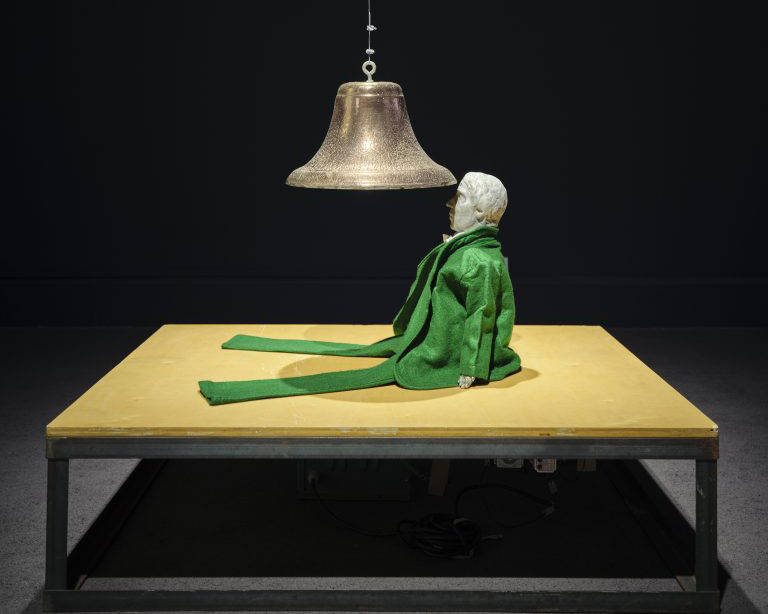
Installation view Narrow Gate of the Here-and-Now: Protest and Conflict, IMMA, Dublin. Photo by Ros Kavanagh
DREAMSPHERE by Aoife Dunne
18 December, 2021 – 7 February, 2022
Hypnotically staged in the IMMA Courtyard, DREAMSPHERE – a site-specific installation devised by IMMA artist-in-residence Aoife Dunne – was the final commission as part of IMMA’s 30th birthday and the first as part of a new winter programme, Winter at IMMA. The installation transported spectators to an immersive mindscape. Exploring the notion of consciousness as an exteriorised shared space in which to roam and reside, audiences were encircled by arresting sounds and screens. The ensuing visualisations, unfolding at a frenetic pace, sent viewers on a surreal trip through the tumultuous mind; teasing future prospects of consciousness-sharing whilst exploiting technology to stretch the psychological parameters of human experience. Accompanied by a series of digital assets created by Dunne, the work played a pivotal role in attracting audiences to IMMA throughout the dark winter months.





